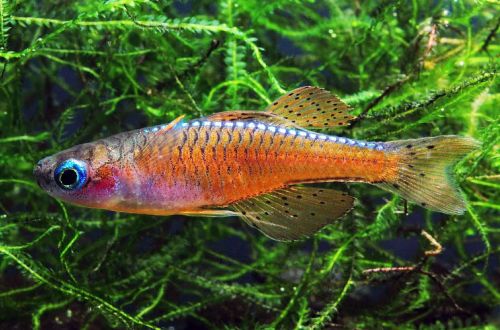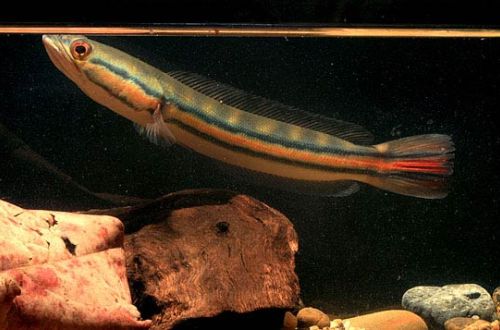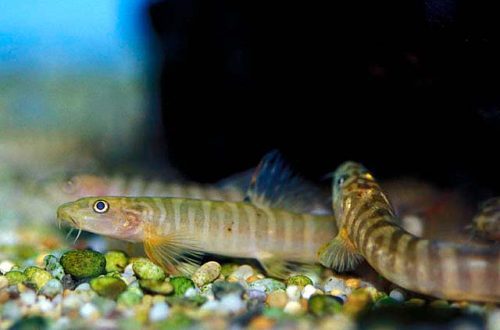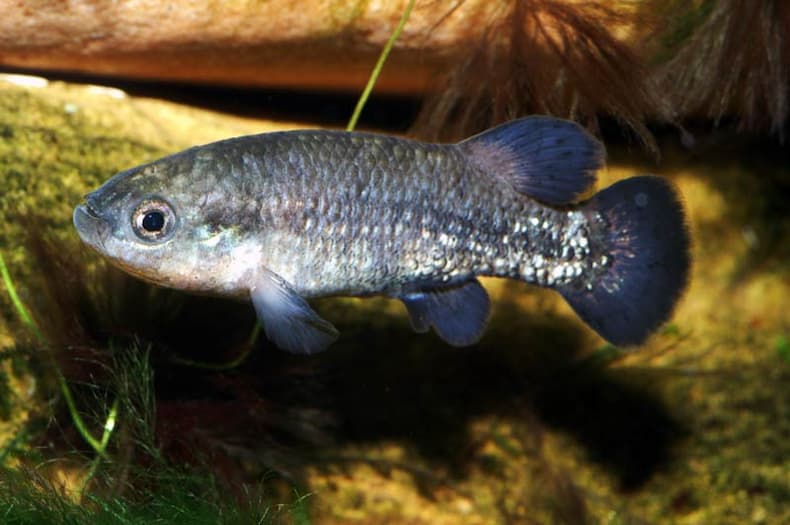
“Black Prince”
Characodon bold or “Black Prince”, the scientific name of Characodon audax, belongs to the Goodeidae (Goodeidae) family. Unique rare fish. Although it does not have a bright color, it has a complex behavior that is interesting to watch. However, the peculiarities of behavior cause additional difficulties in the content. Not recommended for beginner aquarists.

Contents
Habitat
It comes from Central America from the territory of Mexico. Found in limited, isolated areas of the Durango Plateau, with only 14 locations. By the time the article was being prepared, fish are no longer found in 9 of them due to environmental pollution. In the wild, they are on the verge of extinction. It is likely that the population living in aquariums is much larger than that found in nature.
In their natural environment, they inhabit transparent shallow lakes and spring streams with abundant aquatic vegetation.
Brief information:
- The volume of the aquarium – from 80 liters.
- Temperature – 18-24°C
- Value pH — 7.0–8.0
- Water hardness – 11–18 dGH)
- Substrate type — stony
- Lighting – subdued
- Brackish water – no
- Water movement is weak
- The size of the fish is 4–6 cm.
- Nutrition – any feed with herbal supplements
- Temperament – inhospitable
- Content in a group of 6 individuals
Description
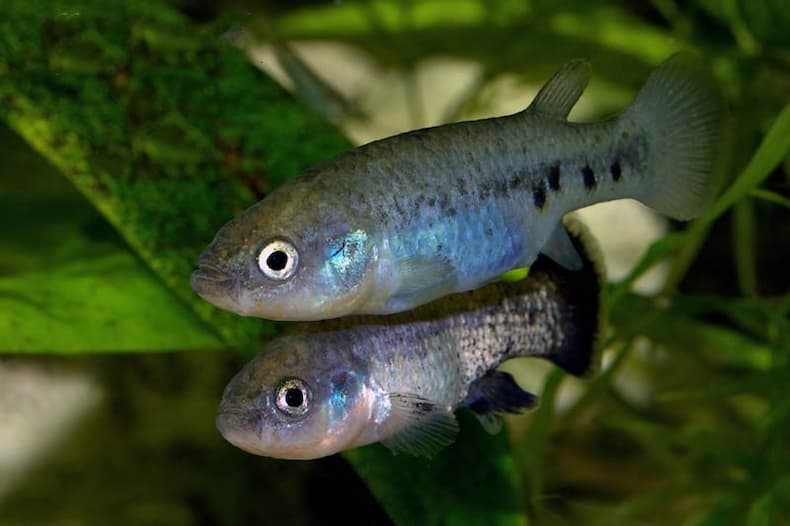
It is a close relative of the Red Prince fish (Characodon lateralis) and has many features in common with it. Males grow up to 4 cm, have a silvery body with a golden sheen. Fins and tail are black. Females are somewhat larger, reaching 6 cm in length. The coloration is less bright, mostly gray with a silvery belly.
Food
Considered an omnivore, most popular dry, frozen and live foods will be accepted in the home aquarium. However, experienced breeders do not recommend a diet high in protein; plant components should also be present in the diet.
Maintenance and care, arrangement of the aquarium
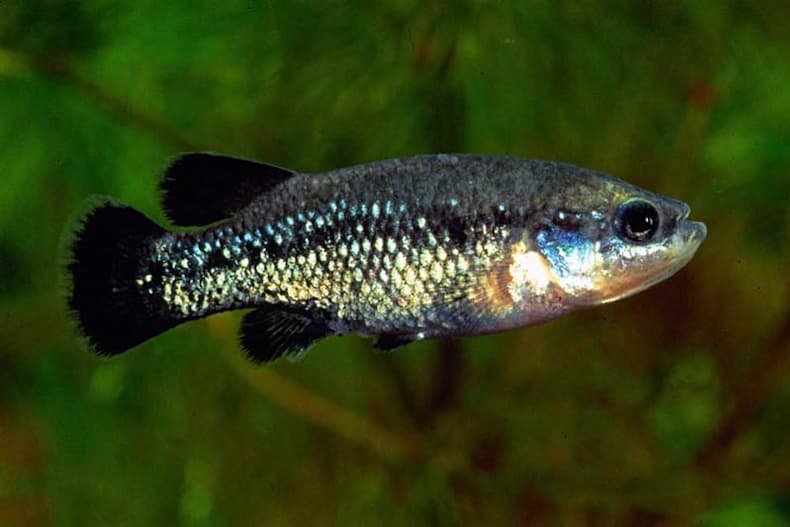
Despite the modest size of these fish, a group of 6 or more individuals will require a tank of 80 liters or more. It’s all about the peculiarities of their behavior, but more on that below. The design uses a rocky substrate, heaps of large stones, rock fragments, from which gorges and grottoes are formed. The landscape is diluted with thickets of living or artificial plants located in groups. Such structures create many reliable shelters.
Successful long-term management is largely determined by the aquarist’s ability to maintain high water quality. In this case, it means preventing the accumulation of organic waste (feed residues, excrement) and ensuring temperature, hydrochemical indicators in the acceptable range of values.
Behavior and Compatibility
This is a very temperamental fish. Males are territorial and will fight each other for the best plot and females. The latter are quite tolerant of each other and can be in a group. To escape from excessive male attention, they can hide in gorges or among plants, subdominant males will also hide there. Among the brave Harakodons, a dominant alpha male always appears, in order to dispel his aggression, it is necessary to acquire a group of at least 6 or more fish. In a small group or pair, one of the fish will be doomed.
Compatible with other species living in the water column or near the surface, but they must be mobile and somewhat larger. Any small or slow tankmates will be at risk.
Breeding / breeding
The appearance of offspring is possible throughout the year. Spawning can be stimulated by gradually lowering the water temperature to 18–20 degrees for a couple of weeks. When the temperature begins to rise again, the likelihood of the onset of the mating season will become higher.
Viviparous species are characterized by intrauterine bearing of offspring. Spawning occurs among plants or inside the grotto, as well as any other shelter. The fry appear fully formed, but for the first few days they cannot swim, sinking to the bottom and remaining in place. At this time, they become most vulnerable to predation by other fish. In addition, the Black Prince’s parental instincts are not developed, so he can also eat his own offspring. If possible, it is advisable to transfer the juveniles to a separate tank. While they are small, they get along well with each other. Feed any small food, such as crushed flakes.
Fish diseases
The optimal habitat conditions for Harakodon bold are in a rather narrow range, so the main cause of most diseases is an unsuitable environment that causes depression of the fish’s immunity and, as a result, its susceptibility to various diseases. When observing the first symptoms of the disease, the first thing to do is to check the water quality for contamination, excess pH and GH values, etc. Probably the presence of injuries due to skirmishes with the alpha male. Eliminating the causes contributes to the disappearance of the disease, but in some cases, medication will be required. Read more in the section “Diseases of aquarium fish”.



